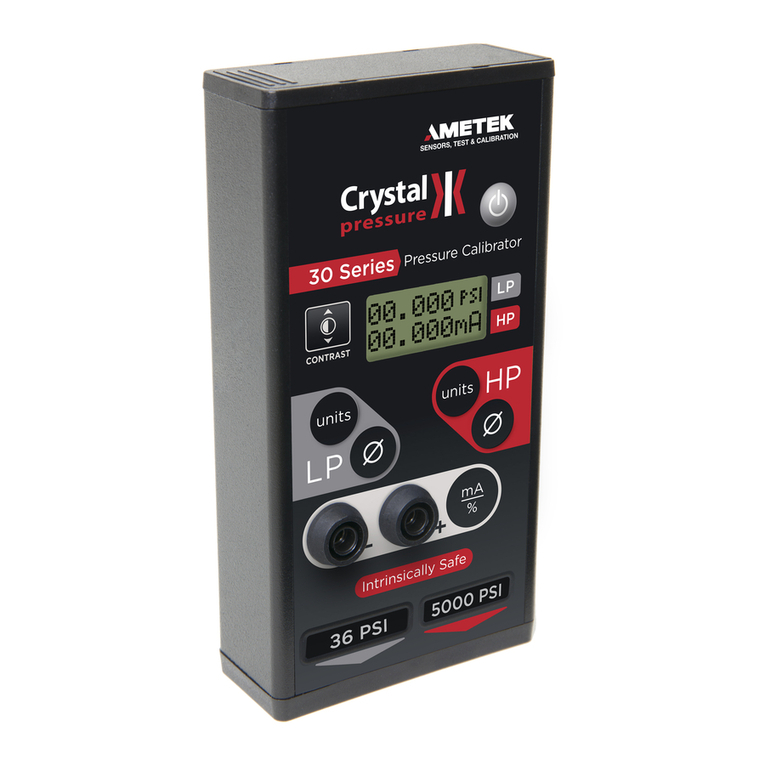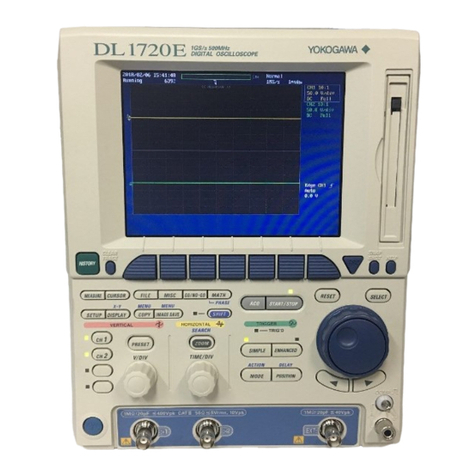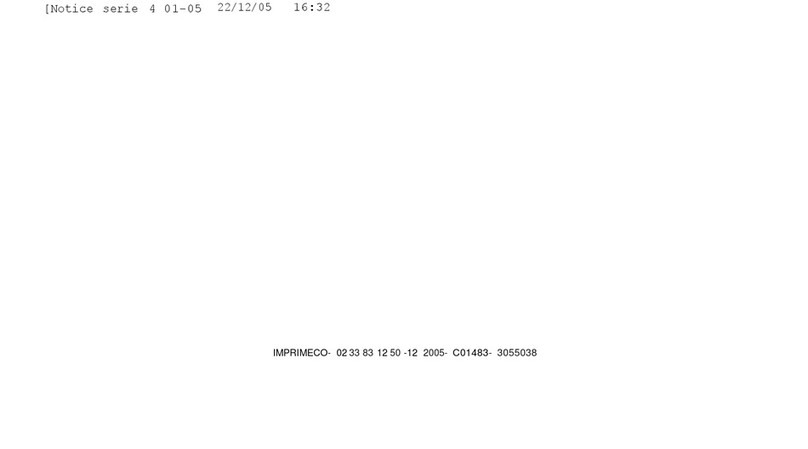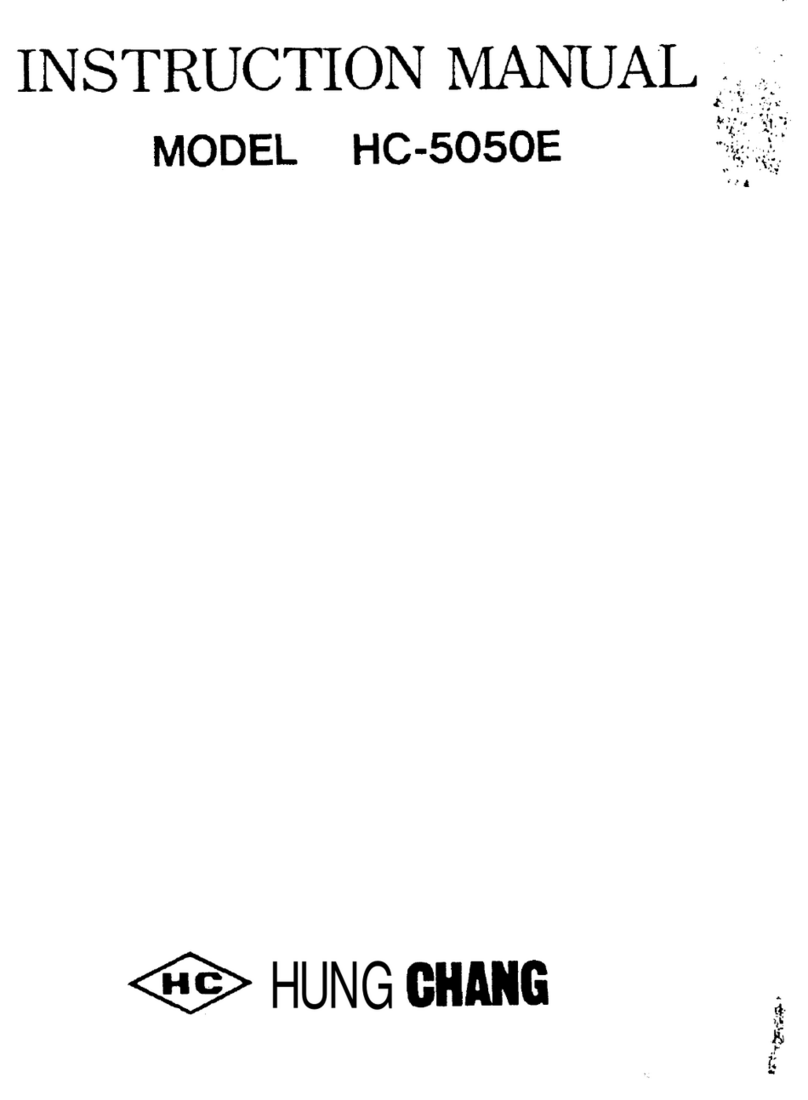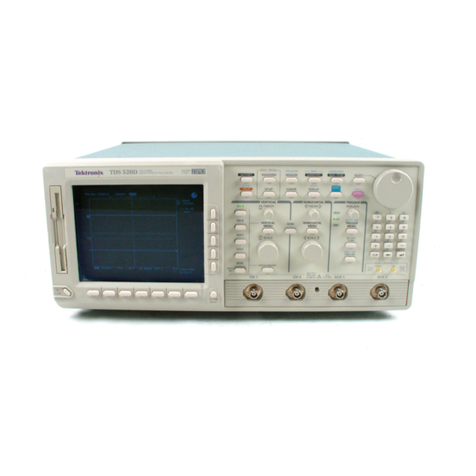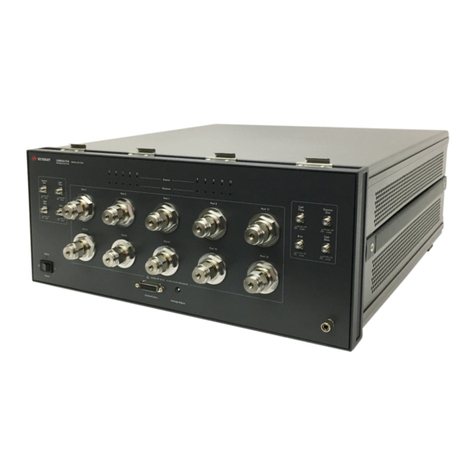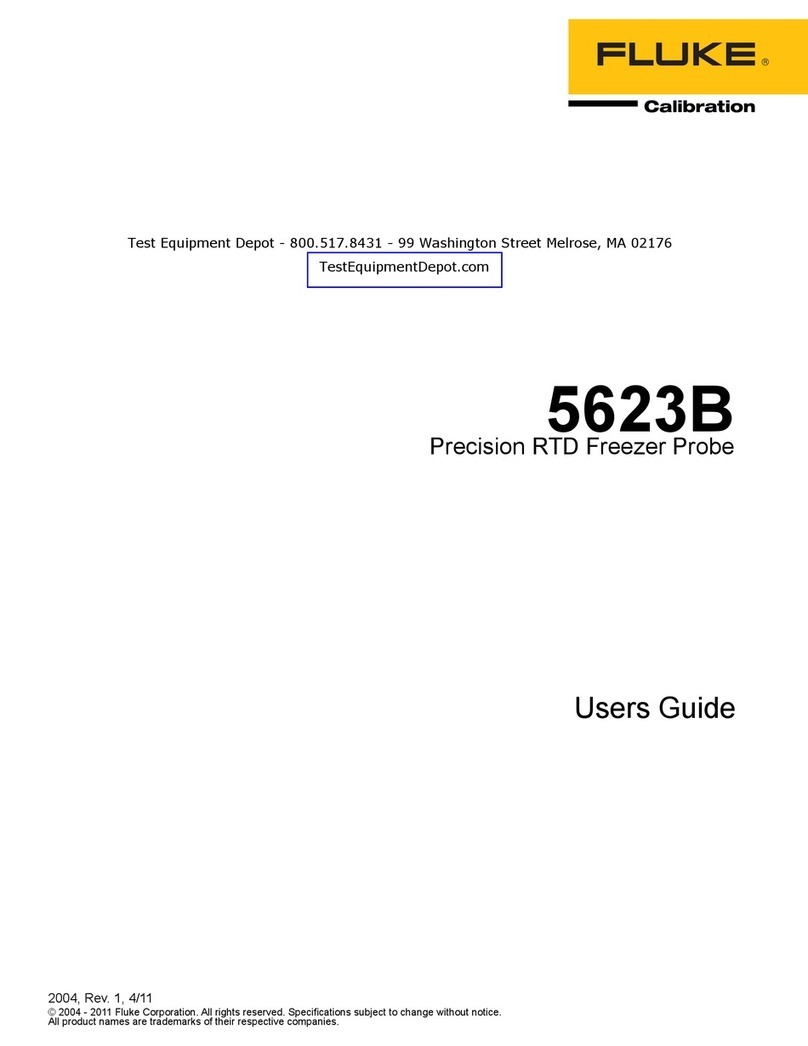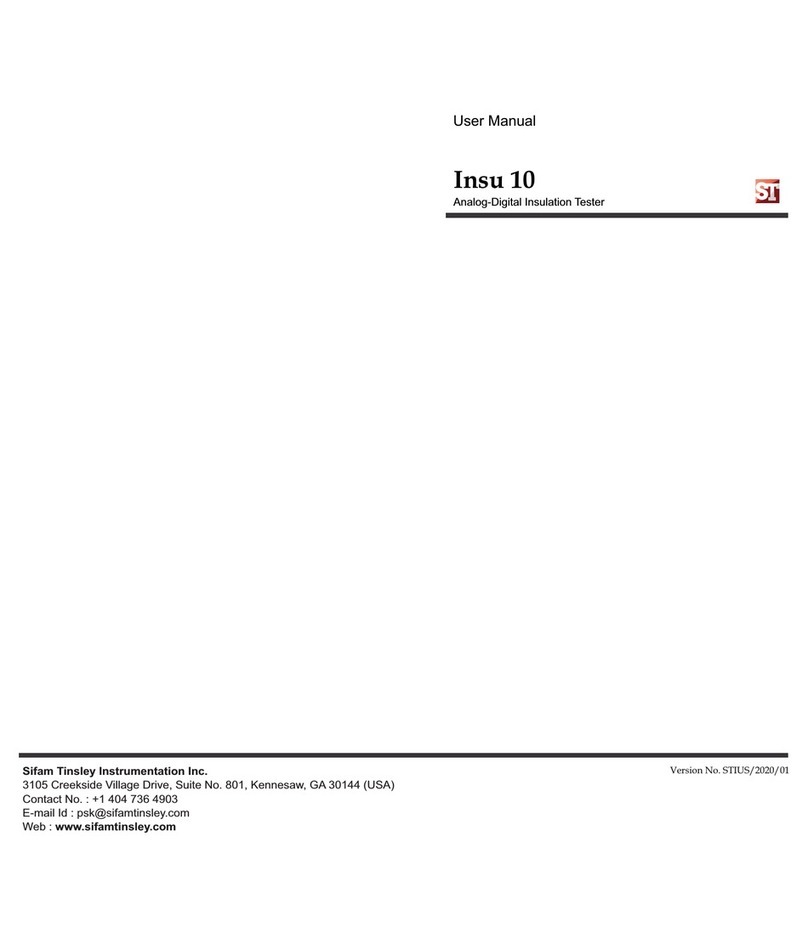Industrial Fiber Optics IF 511 User manual

Laser Audio Transmission
Project
Experiment & Product Guide
IF 511 and IF 512
INDUSTRIAL FIBER OPTICS

*
Copyright © 2010
Previous Printings 2000, 2003, 2006
by Industrial Fiber Optics, Inc.
Revision - C
Printed in the United States of America
* * *
All rights reserved. No part of this publication may be reproduced, stored in
a retrieval system, or transmitted in any form or by any means (electronic,
mechanical, photocopying, recording, or otherwise) without prior written
permission from Industrial Fiber Optics, Inc.
* * * * *

- i -
Introduction
This manual provides information about Industrial Fiber Optics' Laser Audio
Transmission Project. The project can be purchased with either a Helium Neon
(HeNe) laser, IF HN08M (P/N IF 511), or a Semiconductor Diode laser, IF RL08-635
(P/N IF 512), as the laser light transmission source. The manual contains all the
information you need for both lasers to complete this project safely and
knowledgeably, even if you are a novice to this technology. Please read the manual
carefully while completing activities.
As soon as you receive the Laser Audio Transmission Project, inspect it and the
shipping container for damage. If any damage is found, immediately refer to the
section of this manual entitled "Shipment Damage Claims". Then check the contents
against the appropriate kit listed in Table 1.
Industrial Fiber Optics makes every effort to incorporate state-of-the-art
technology, highest quality and dependability in its products. We constantly explore
new ideas and products to best serve the rapidly expanding needs of industry and
education. We encourage comments that you may have about our products, and we
welcome the opportunity to discuss new ideas that may better serve your needs. For
more information about our company and products refer to http//www.i-
fiberoptics.com on the Worldwide Web.
Thank you for selecting this Industrial Fiber Optics product. We hope it meets
your expectations and provides many hours of productive activity.
Sincerely,
The Staff at Industrial Fiber Optics

- ii -

- iii -
TABLE OF CONTENTS
Introduction
.................................................................................... i
LASER CLASSIFICATIONS ..................................................... iv
PROJECT KIT COMPONENTS ................................................ 1
LIGHT for COMMUNICATION.................................................. 2
ACTIVITIES
HeNe Procedure..................................................................... 3
Diode laser Procedure ............................................................ 5
Fiber Optic Procedure ............................................................. 7
TROUBLESHOOTING............................................................... 8
SERVICE AND MAINTENANCE ............................................. 9
WARRANTY .............................................................................. 10
SHIPMENT DAMAGE CLAIMS ................................................ 11

- iv -
LASER CLASSIFICATIONS
All manufacturers of lasers used in the United States must conform to regulations
administered by the Center for Devices and Radiological Health (CDRH), a branch of the U.S.
Department of Health and Human Services. CDRH categorizes lasers as follows:
Class
Description
I A laser or laser system which does not present a hazard to skin or eyes
for any wavelength or exposure time. Exposure varies with wavelength.
For ultraviolet, .2 to .4 !m exposure is less than from .8 nW to .8 !W.
Visible light exposure varies from .4 !W to 200 !W, and for near IR, the
exposure is < 200 !W. Consult CDRH regulations for specific
information.
II Any visible laser with an output less than 1 mW of power. Warning label
requirements — yellow caution label stating maximum output of 1 mW.
Generally used as classroom lab lasers, supermarket scanners and
laser pointers.
IIIa Any visible laser with an output over 1 mW of power with a maximum
output of 5 mW of power. Warning label requirements — red danger label
stating maximum output of 5 mW. Also used as classroom lab lasers, in
holography, laser pointers, leveling instruments, measuring devices and
alignment equipment.
IIIb Any laser with an output over 5 mW of power with a maximum output of
500 mW of power and all invisible lasers with an output up to 400 mW.
Warning label requirements — red danger label stating maximum output.
These lasers also require a key switch for operation and a 3.5-second
delay when the laser is turned on. Used in many of the same applications
as the Class IIIa when more power is required.
IV Any laser with an output over 500 mW of power. Warning label
requirements — red danger label stating maximum output. These lasers
are primarily used in industrial applications such as tooling, machining,
cutting and welding. Most medical laser applications also require these
high-powered lasers.

- 1 -
Project Kit Components
Table 1 lists all components included in both models of the Laser Audio
Transmission Kit. Before proceeding to activities, identify each component listed in the
table below for the appropriate kit number.
Table 1. P roje ct kits com ponen t lis t.
General Description P/N
IF 511
P/N
IF 512 Quantity
Laser Audio Receiver IF 513 IF 513 1
Helium Neon (HeNe)
Laser
IF HN08M 1
Diode Laser IF RL08-635 1
Microphone 57 0022 57 0022 1
Plastic Optical Fiber IF C E1000 IF C E1000 3 meters
After inspecting your kit for the correct contents you can proceed to set up a
voice transmission project. Go to page 3 if you have the helium neon laser project and
to page 5 if you have the semiconductor laser project.
T abl e 2. C o mm on ab bre vi ati on s us ed i n t his m an ua l.
Abbr. Long version Scientific Notation
mW milliwatts 1 x 10-3 watts
!W microwatts 1 x 10-6 watts
nW nanowatts 1 x 10-9 watts
mm millimeters 1 x 10-3 meters
!m micrometers 1 x 10-6 meters
nm nanometers 1 x 10-9 meters

- 2 -
Light as Communication
Light is usually thought of as a modern means of communication, be it line of
sight directly from source to receiver or through a medium such as a fiber optic cable.
However, light has been used to provide communications since ancient times.
One of the earliest recorded uses of light for communications comes from the
ancient city of Alexandria. One of the 7 wonders of the ancient world was the Pharos
Lighthouse constructed around 290 BC. This impressive structure towered over the
city and provided guidance for sailors at sea as far as 35 miles. It used a mirror to
reflect sunlight during the day and bonfires at night to guide ships to the harbor.
Moving forward historically, the advent of modern communications with light
can be said to have started with Alexander Graham Bell. In addition to the telephone
this prolific inventor created what he called the photophone. Utilizing sunlight
reflected from mirrors Mr. Bell generated the worlds first wireless telephone call on
June 3, 1880. He considered this an even greater invention than the telephone, and
the ever growing field of fiber optic communications pays tribute to his belief that light
was the communication method of the future.

- 3 -
HeNe Laser Procedure
Equipment Needed:
• HeNe Laser ; IFO part number IF HN08
• 120-VAC to 12-VDC powe adapters (2)
• Microphone; IFO part number 57 0022
• Laser Audio Receiver; IFO part number IF 513
Procedure:
1. Choose a flat, level surface about 60 x 120 cm (2 x 4 feet) in size.
2. Collect all the items listed in the “EQUIPMENT NEEDED” section above.
3. Review the Rules for Laser Safety listed on the back cover of this booklet.
4. For detailed information regarding the operation of the helium neon laser refer
to its operating manual.
5. Position the laser and the receiver as shown in Figure 1.
6. Push the laser shutter’s handle downward to its closed position.
7. Make sure the laser's ON/OFF switch (SW) is in its OFF position. (The push
button should be in its extended position.)
audio
receiver
laser
Figure 1. Side vie w of th e lase r an d audio re ceiver.
8. Plug the VAC-to-DC laser power adapter into an AC electrical outlet.
9. Plug the cord from the power adapter into the power jack (PWR) located on
the rear of the laser.
10. Plug the VAC-to-DC audio receiver power adapter into an AC electrical outlet.
11. Plug the cord from the power adapter into the power jack located on the front
of the audio receiver.
12. Plug the microphone into the 3.5 mm audio jack on the back of the laser.

- 4 -
13. Depress the ON/OFF switch (SW) on the control panel of the laser until it
clicks into the ON position. (The switch should be slightly depressed.) The
pilot light (green LED) on the laser should now be lit, showing that it is on.
14. Open the laser shutter.
15. Dim the room lights to help you observe the laser
beam. Position the receiver in line with the laser
so the beam strikes the audio receiver close to
the photodetector access hole. Manually align
the beam with the optical input (photo diode) of
the audio receiver.
16. Turn on the microphone using the switch located
on the side.
17. Turn the ON/OFF volume knob on the audio
receiver to the 12 o’clock position. The pilot light
(yellow LED) on the audio receiver should now be lit, showing that it is on.
18. Speak into the microphone and listen for your voice to come out of the audio
receiver. If you do not hear your voice on the first attempt, continue to speak
into the microphone while turning up the volume control clockwise on the
audio receiver. If you reach maximum volume and still do not hear your voice,
realign the laser beam with the audio receiver while speaking into the
microphone.
19. When you have the audio receiver and the laser properly aligned you should
easily hear your voice from the receiver when you speak into the microphone.
20. If you continue to have problems at this point refer to the
“TROUBLESHOOTING” section in the back of the manual. If you have
successfully established an audio link using the laser continue with your
experiment.
21. Upon completing the experiment close the laser beam shutter. At this time
you can either continue to the Fiber Optic Transmission procedure on page 7
or switch off the laser and complete the remaining steps below.
22. Turn the volume knob on the audio receiver to the OFF position.
23. Turn off the microphone.
24. Unplug the power adapters from the electrical outlets, the laser and the audio
receiver.
25. Remove all equipment from the table and store in their proper locations.
Direct Laser Beam
through hole and
onto detector
1515.eps
Figu re 2. Clos e up
view of the
ali gn m en t la se r
beam to rece iver
ap ert u re.

- 5 -
Diode Laser Procedure
Equipment Needed:
• Diode Laser; IFO part number IF RL08-635
• 120 -VAC to 12-VDC power adapter (2)
• Microphone; IFO part number 57 0022
• Laser Audio Receiver; IFO part number IF 513
Procedure:
1. Choose a flat, level surface about 60 x 120 cm (2 x 4 feet) in size.
2. Collect all the items listed in the “EQUIPMENT NEEDED” section above.
3. Review the Rules for Laser Safety listed on the back cover of this booklet.
4. For detailed information regarding the operation of the semiconductor diode
laser refer to its operating manual.
5. Position the laser and the receiver as shown in Figure 3.
6. Push the laser shutter’s handle downward to its closed position.
7. Make sure the laser's ON/OFF switch (SW) is in its OFF position. (The push
button should be in its extended position.)
audio
receiver
laser
Figure 3. Side vie w of th e lase r an d audio re ceiver.
8. Plug the VAC-to-DC laser power adapter into an AC electrical outlet.
9. Plug the cord from the power adapter into the power jack (PWR) located on
the rear of the laser.
10. Plug the VAC-to-DC audio receiver power adapter into an AC electrical outlet.
11. Plug the cord from the power adapter into the power jack located on the front
of the audio receiver.
12. Plug the microphone into the 3.5 mm audio jack on the back of the laser.
Direct Laser Beam
through hole and
onto detector
1515.eps
Figu re 4. Clos e up
view of the
ali gn m en t la se r
beam to rece iver
ap ert u re.

- 6 -
13. Depress the ON/OFF switch (SW) on the control panel of the laser until it
clicks into the ON position. (The switch should be slightly depressed.) The
pilot light (green LED) on the laser should now be lit, showing that it is on.
14. Adjust the Gain Control knob on the laser to the fully counter-clockwise
position. (Gain = 1)
15. Open the laser shutter.
16. Dim the room lights to help you observe the laser beam. Position the receiver
in line with the laser so the beam strikes the audio receiver around the
photodetector access hole. Manually align the beam with the optical input
(photo diode) of the audio receiver.
17. Turn on the microphone using the switch located on the side.
18. Turn the ON/OFF volume knob on the audio receiver to the 12 o’clock
position. The pilot light (yellow LED) on the audio receiver should now be lit,
showing that it is on.
19. Speak into the microphone and listen for your voice to come out of the audio
receiver. If you do not hear your voice on the first attempt, continue to speak
into the microphone while turning up the volume control clockwise on the
audio receiver. If you reach maximum volume and still do not hear your voice,
realign the laser beam with the audio receiver while speaking into the
microphone.
20. When you have the audio receiver and the laser properly aligned you should
hear your voice from the receiver when you speak into the microphone. If you
do not slowly adjust the Gain Control knob clockwise while continuing to
speak into the microphone. (Maximum gain = 50 at the full clockwise
position)
21. If you continue to have problems at this point refer to the
“TROUBLESHOOTING” section in the back of the manual.
22. Upon completing the experiment close the laser beam shutter. At this time
you can either continue to the Fiber Optic Transmission procedure on next
page or switch off the laser and complete the remaining steps below.
23. Turn the volume knob on the audio receiver to the OFF position.
24. Turn the Gain Control knob fully counter-clockwise and turn off the
microphone.
25. Unplug the power adapters from the electrical outlets, the laser and the audio
receiver.
26. Remove all equipment from the table and store in their proper locations.
Fiber Optic Transmission Procedure
Additional Equipment Needed:
3 meters 1.0 mm core plastic optical fiber

- 7 -
Procedure:
The assumption is made that one of the proceeding laser procedures is still set up
and operational as an optical audio link, and you are now familiar with the safe
operation of the laser. It is recommended that 2 people be used for this procedure to
simplify the handling of the equipment and the fiber. If you need to do this
experiment by yourself it is recommended that the microphone be replaced as the
audio input source with a radio or other device to provide the modulation for the
laser. This will allow the use of both hands to handle the plastic optical fiber.
If you are starting this procedure as a new stand alone experiment please refer to
the initial set-up steps, up to the point of turning on the laser, for the project kit that
was purchased. The intent of this procedure is to show how optical fiber is used as a
waveguide for light so that a straight line of sight from the sending point to the
receiver is no longer required.
1. Move the audio receiver out of the laser path.
2. Grasp one end of the fiber optic cable between your thumb and forefinger.
Open the shutter of the laser and hold the fiber in the path of the laser beam
(input side). DO NOT LOOK AT THE OUTPUT END OF THE FIBER AT
THIS TIME.
3. Have a second person grasp the other end of the fiber optic cable (output side)
and hold it up to the optical input, (photo diode) of the audio receiver.
4. Speak into the microphone and listen to hear your voice coming from the
audio receiver. If your voice is not heard increase the volume slowly until
maximum volume is reached. If you still do not hear your voice check to see
that the fiber is aligned with the laser beam and is being transmitted through
the fiber to strike the optical input photo diode. DO NOT LOOK DIRECTLY
AT THE OUTPUT END OF THE FIBER. Hold the fiber end up to a white
sheet of paper to verify beam transmission.
5. If you continue to have problems at this point refer to the
“TROUBLESHOOTING” section in the back of the manual. If you have
successfully established an audio link using the plastic optical fiber continue
with your experiment.
6. Once the procedure is completed turn off all equipment and return the
equipment to its appropriate storage location.

- 8 -
TROUBLESHOOTING
NO PILOT LIGHT
• Is the laser’s ON/OFF switch in the ON position?
• Is the 110 (220) VAC-to-VDC power adapter plugged into the laser and an
appropriate wall outlet or extension cord?
• Is there power to the wall outlet?
NO LIGHT OUTPUT FROM LASER
• Check pilot light. If not on, go to the previous Troubleshooting step.
• Is the mechanical beam stop in its open position?
• Damaged or inadequate power adapter.
• Low voltage to the wall outlet.
NO SOUND FROM LASER AUDIO RECEIVER
• Is the 110 (220) VAC-to-VDC power adapter plugged into the laser audio
receiver and an appropriate wall outlet or extension cord?
• Is the receiver’s power indicator light on?
• Is the laser beam positioned properly so its beam hits the receiver detector?
• Are input signals to the laser of sufficient amplitude? (Speak louder into the
microphone.)
• For Diode Laser Only: Check to see if the Gain control knob is turned to the
12 o’clock position (refer to the Laser Diode instruction manual for the
operation of the Gain Control knob).
• Check for damaged or open electrical circuit in the microphone cord.
• Slowly turn down the volume control on the receiver while continuing to talk
into the microphone. (This will desensitize the receiver in case the receiver is
too sensitive [saturating] for this laser.)
• Check the troubleshooting section in your laser audio receiver manual.
Do not attempt to troubleshoot the laser or laser receiver beyond the steps listed
above. If all your connections are correct, and you are confident that power is being
supplied to the laser and any input devices, please return the laser for appropriate
inspection/servicing to Industrial Fiber Optics,as described in the section entitled
“SERVICE AND MAINTENANCE”.

- 9 -
SERVICE AND MAINTENANCE
Periodic operation, maintenance and service of this equipment is not required. The
warranty will be voided if entry has been made, and/or any screws have been removed.
In the unlikely event this equipment malfunctions and you wish to have it repaired,
please do the following:
• In writing, describe the problem, person to contact, phone number, and return
address.
• Carefully pack the item, its power adapter, manual, and written description in
a stout box with sufficient packing material to prevent damage in shipment.
• Ship the package to:
INDUSTRIAL FIBER OPTICS
1725 West 1st Street
Tempe, AZ 85281-7622
USA

- 10 -
WARRANTY
Industrial Fiber Optics products are warranted against defects in materials and
workmanship. The warranty for the product, excluding laser, is for one (1) year. The
warranty for the individual laser is dependent upon model. Refer to the manual which was
included with the laser for the proper warranty period. The warranty will be voided if
internal or external components have been damaged, mishandled, or altered by the buyer.
Warranty liability is limited to repair or replacement of any defective unit at the
company's facilities, and does not include attendant or consequential damages. Repair or
replacement can be made only after failure analysis at the factory. Authorized warranty
repairs are made at no charge, and are guaranteed for the balance of the original warranty.
Industrial Fiber Optics will pay the return freight and insurance charges for warranty
repair within the continental United States, by United Parcel Service or Parcel Post. Any
other delivery means must be paid for by the customer.
If an item is not under warranty, repairs will not be undertaken until the cost of such
repairs have been prepaid by the customer. Typical repair costs range from $25 - $75, and
completion times from two to three weeks.
When returning items for analysis and possible repair, please do the following:
• In a letter, describe the problem, person whom we should contact, phone number,
and return address.
• Pack the warranted item and your letter carefully in a strong box with adequate
packing material, to prevent damage in shipment.
• Ship the package to:
INDUSTRIAL FIBER OPTICS
1725 West 1st Street
Tempe, AZ 85281-7622
USA

- 11 -
SHIPMENT DAMAGE CLAIMS
If damage to an Industrial Fiber Optics product should occur during shipping, it is
imperative that it be reported immediately, both to the carrier and the distributor or
salesperson from whom the item was purchased. DO NOT CONTACT INDUSTRIAL FIBER
OPTICS.
Time is of the essence because damage claims submitted more than five days
after delivery may not be honored by the carrier. If damage has occurred during
shipment, please do the following:
• Make a note of the carrier company; the name of the carrier employee who
delivered the damaged product; the date; and the time of the delivery.
• Keep all packing material.
• In writing, describe the specific nature of damage to the product.
• In cases of severe damage, do not attempt to use the product, install batteries,
or connect any other power source.
• Notify the carrier immediately of any damaged product.
• Notify the distributor from whom the purchase was made.
------------------------------

- 12 -
Table 3. Me tric Prefi xes an d Their Meanings.
Prefix Symbol Multiple
tera T 1012 (trillion)
giga G 109 (billion)
mega M 106 (million)
kilo k 103 (thousand
hecto h 102 (hundred
deca da 101 (ten)
deci d 10-1 (tenth)
centi c 10-2 (hundredth)
milli m 10-3 (thousandth)
micro ! 10-6 (millionth)
nano n 10-9 (billionth)
pico p 10-12(trillionth)
femto f 10-15 (quadrillionth)


12 0130
Rules for Laser Safety
• Lasers produce a very intense beam of light. Treat them with respect. Most
educational lasers have an output of less than 3 milliwatts, and will not harm the skin.
•Never look into the laser aperture while the laser is turned on. PERMANENT EYE
DAMAGE COULD RESULT.
•Never stare into the oncoming beam. Never use magnifiers (such as binoculars or
telescopes) to look at the beam as it travels — or when it strikes a surface.
•Never point a laser at anyone's eyes or face, no matter how far away they are.
•When using a laser in the classroom or laboratory, always use a beam stop, or
project the beam to areas which people won't enter or pass through.
•Never leave a laser unattended while it is turned on — and always unplug it when it's
not actually being used.
•Remove all shiny objects from the area in which you will be working. This includes
rings, watches, metal bands, tools, and glass. Reflections from the beam can be nearly as
intense as the beam itself.
•Never disassemble or try to adjust the laser's internal components. Electric shock could
result.
This manual suits for next models
1
Table of contents
Other Industrial Fiber Optics Test Equipment manuals
Popular Test Equipment manuals by other brands
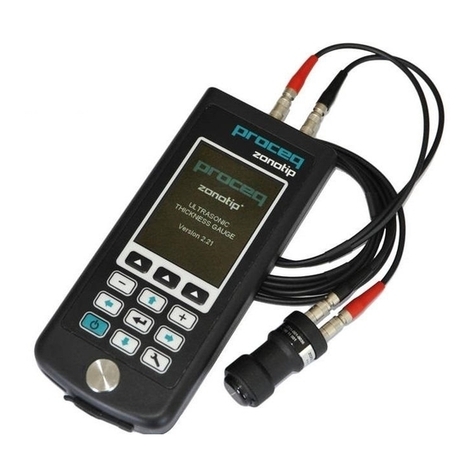
Proceq
Proceq Zonotip+ Service Manual & Repair Guide
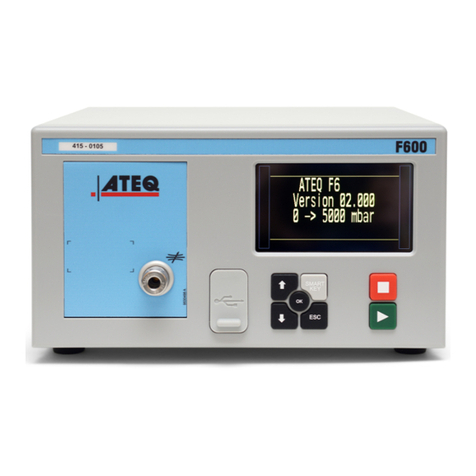
ATEQ
ATEQ F600 manual
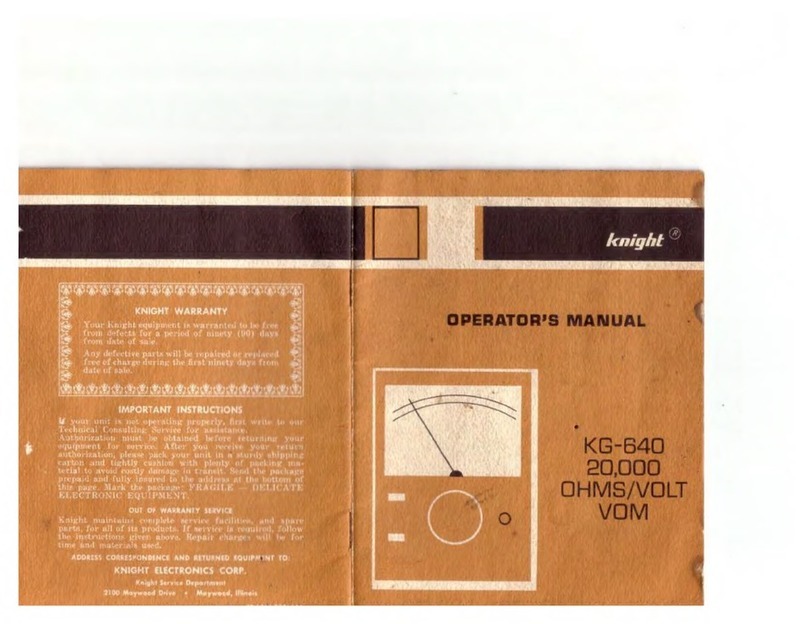
Allied Radio
Allied Radio Knight KG-640 Operator's manual

Sunrise telecom
Sunrise telecom CaLan N1776A user manual
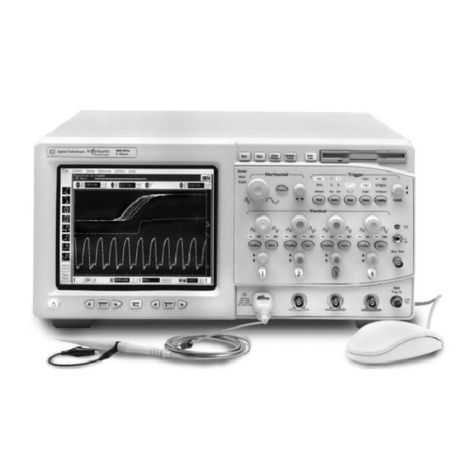
Agilent Technologies
Agilent Technologies 54810A User's quick start guide

Agilent Technologies
Agilent Technologies E5022A Operation manual

